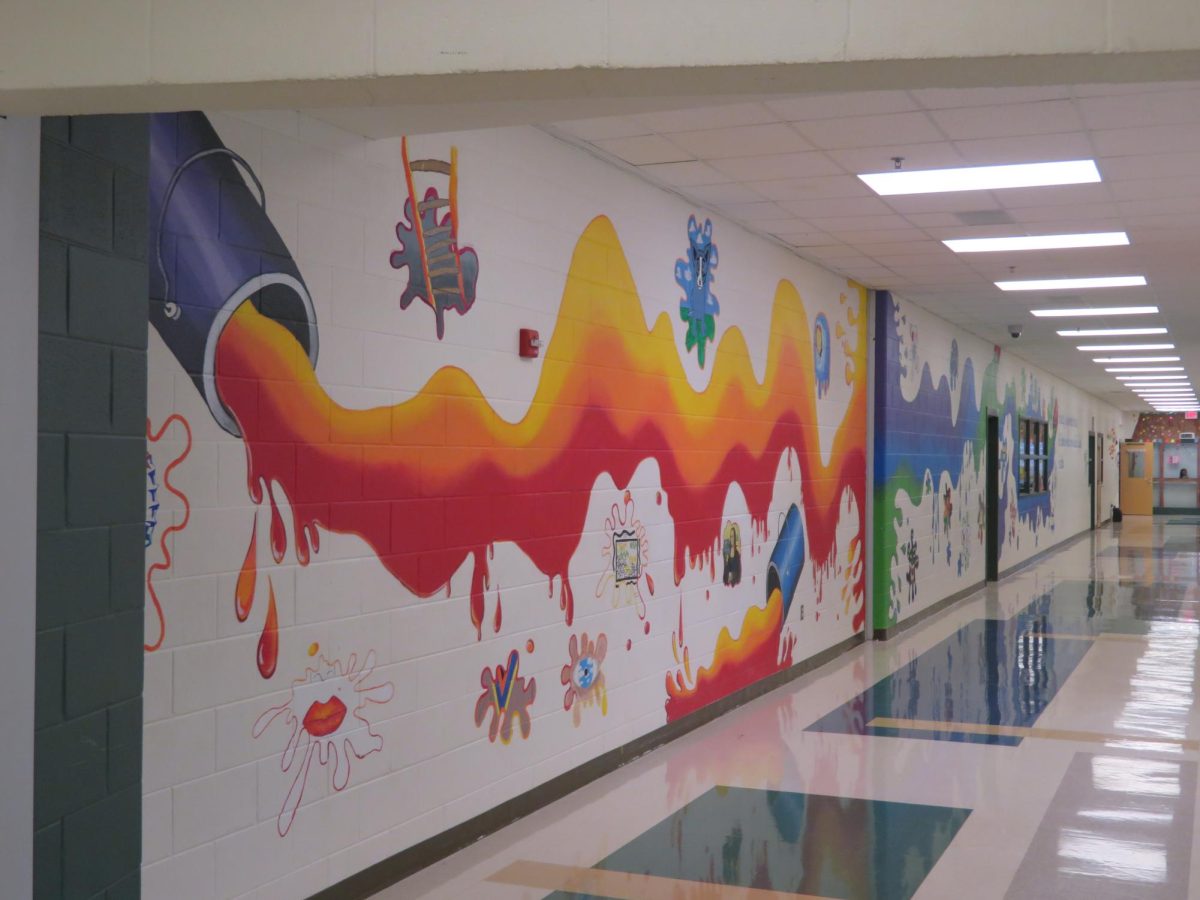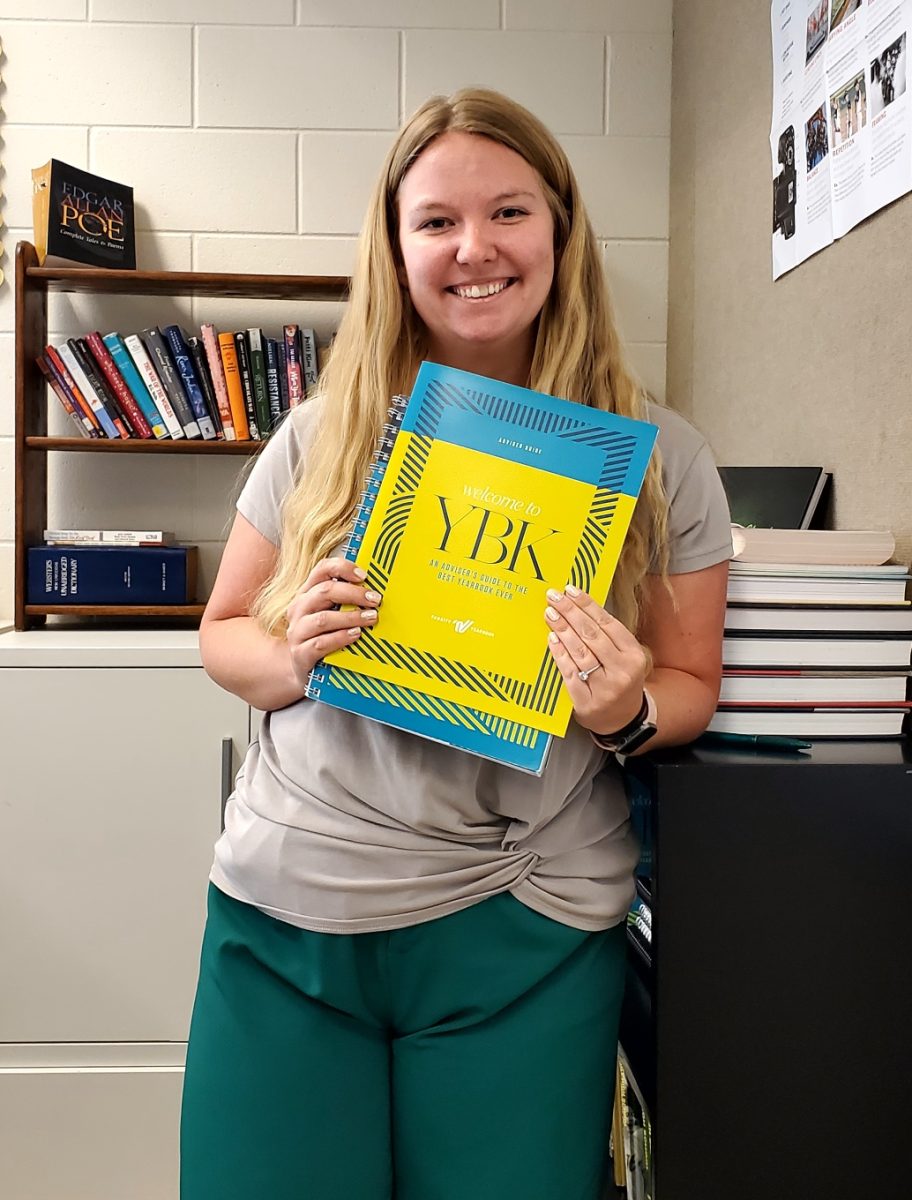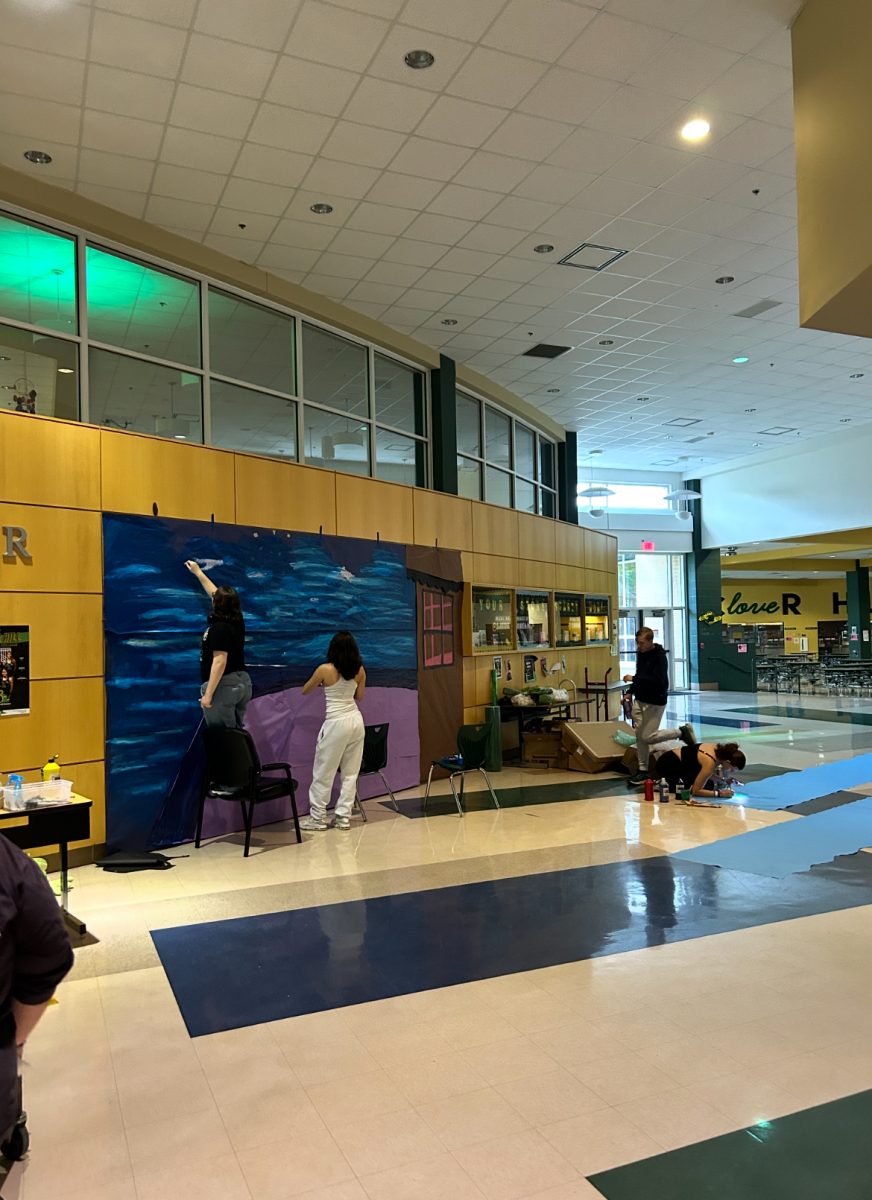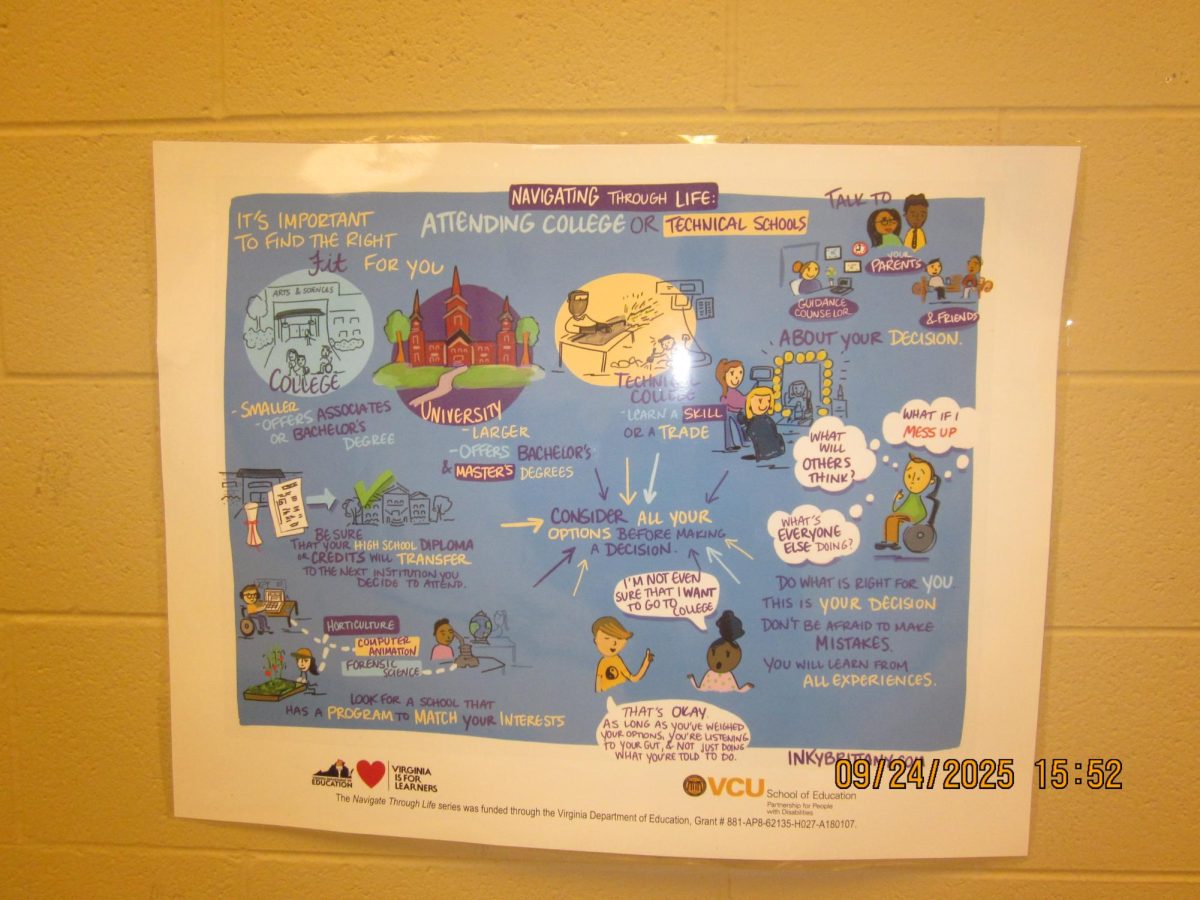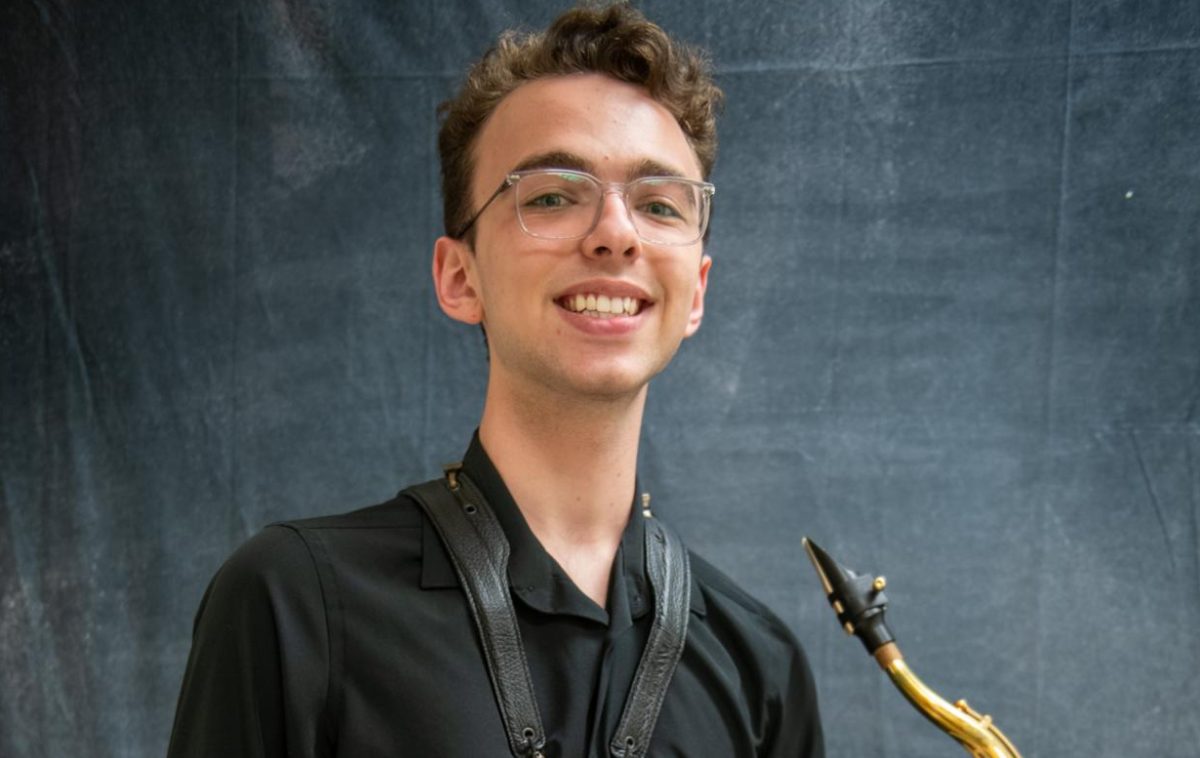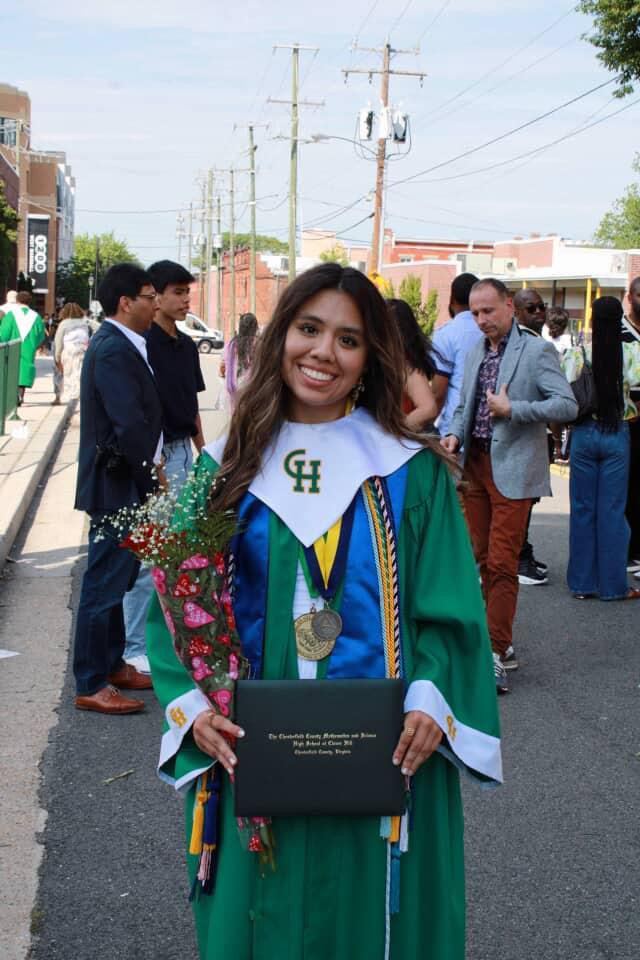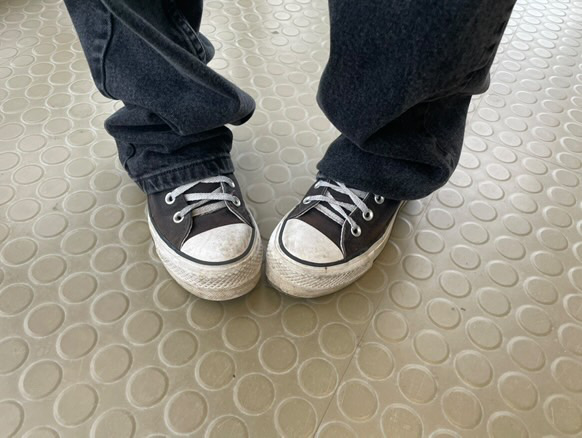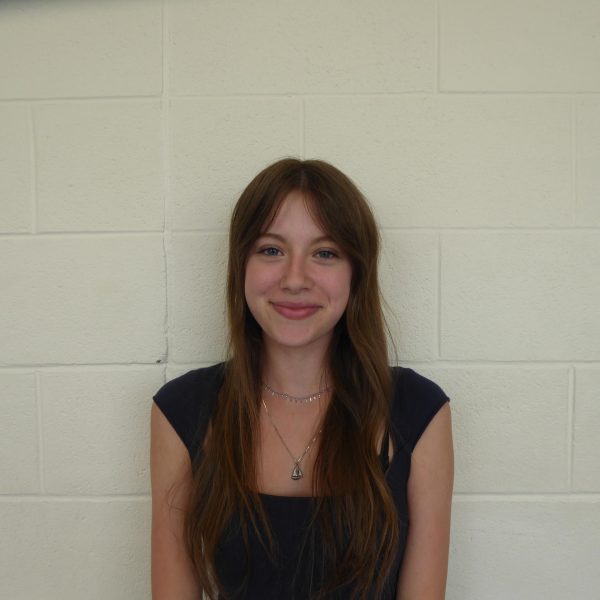Art class enrollment rates have dropped significantly, and many teachers and students are putting passion on stand for this.
The Clover Hill Art Department is known for being exceptional from art installations at the school board building to exemplary plays. Despite this success, the visual arts department’s participation and passion has remained unsteady beyond diploma requirements.
Over the last five years, enrollment has remained on a downward trend; with the exception of the 2024-2025 school year which included a stark uptick followed by a growing disinterest during the 2025-2026 school year, but this is not reflected in the perspective of all teachers.
Art teacher Breanna Ferguson — and many other art teachers — reflected on the size and makeup of their classes over the years.
“My class sizes have remained kind of the same since my first year,” Ferguson said. “The grade breakup is a little more even now.”
This assessment is matched by upper level art teacher Rachael Principe.
“Yeah they were about this [referring to class size]” Principe stated.
Enrollment rates remained on a steady decline of around 30 less students a year until the 2024-2025 school year which saw a large increase in enrolled students, going from 770 art students in the 2023-2024 school year to 890 the following year. However this was contrasted greatly by the very large drop in the 2025-2026 school year with only 684 students.
It is not just the enrollment rates that have changed, it is also the passion. Graphic design teacher Jamie Barnett believes that there has been an increase in apathy along with a decline in passion.
“I have seen generally, kind of a decline in just general passion,” Barnett said.
This is reflected in the number of students taking upper level courses, especially advanced placement classes, with Advanced Placement (AP) art enrollment being at an all time low of seven this school year across three classes compared to 39 AP art students in the 2022-2023 school year.
A lack of passion for the arts does not just affect classes, art classes are a vital part of learning. Many teachers hold the same sentiment, that art is not just an elective.
“Arts and creativity actually is a way to wire our brain and learn,” Principe said.
Many students see art just as a final product, which can affect their passion for the discipline.
“Art isn’t just about the product. It’s not about you being a master painter, or perfect at drawing. It’s about the process,” Ferguson agreed.
The source of this drastic downfall can be blamed on many things but one of the causes that seems to come up again and again is the prevalence of media.
When questioned on her opinion on the issue Barnett expressed her thoughts on the role of social media.
“I mean, I think from a personal standpoint, we are so inundated with everything all the time, via social media, the internet, television, even so, we are constantly comparing ourselves to what is successful, right?” Barnett said.
The constant media stimulation that young people face today is possibly the largest cause of this phenomenon. When students are overly exposed to art made by people who have spent years and years honing their skill to create gorgeous, well developed art which is passed off as easy and light work it can create doubts in the students mind that they too can create beautiful art too.
Another seemingly growing concern is burnout, which leads to lack of effort.
Senior Kathrine Stock believes that art classes, especially upper level art classes, require a lot of time and dedication that is just not worth it for most kids.
“I know a lot of people don’t want to make portfolios, especially if they’re not looking to do it in college, even though it can get you a lot of credit,” Stock said.
Regardless of this mass demotivation, the teachers believe that any student can be a great artist if they try.


